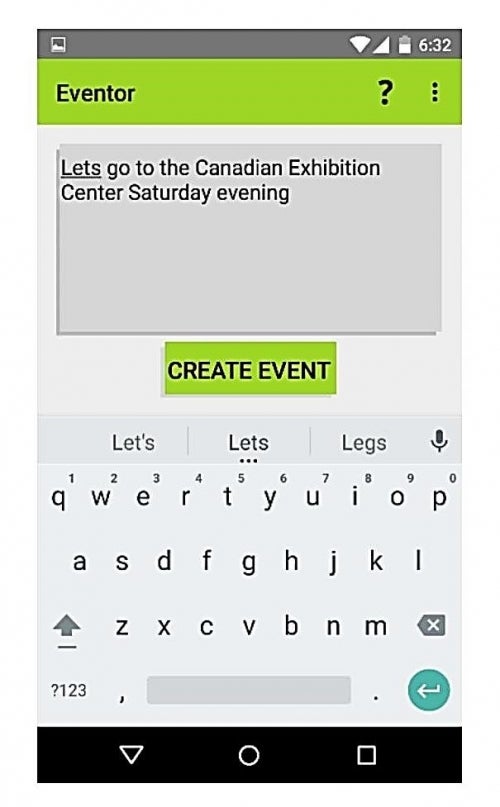If you would like to see more information on this case study, click here!
You can request this case study and a WCDE staff member will get back to you.
It can be very difficult for people to maintain an up-to-date calendar. For a fourth year design team comprised of Management Engineering students, Dave Park, Jesse Singh, Subesh Sivanathan and Salim Nanji, this was no exception. Even though a range of software applications have made the process of scheduling and reminding people of these commitments a lot easier, the design team still felt overwhelmed with their schedules. Throughout each semester, they had employee information sessions, social gatherings, make-up lectures, intramural games, etc. They relied on common methods such as manually adding reminders to a calendar or using Google Voice to verbally input details of an event. The team saw a need for a simplified event scheduling process, and decided to develop a solution for their fourth year design project. Under the supervision of Olga Vechtomoza, they developed an app called Eventor. Eventor was designed to simplify the creation of events on mobile devices. A user selects or provides any raw text found within their mobile device and shares this to the Eventor app. It then parses the selected text and determines the title, date, time, location and description of the event. After the user confirms or edits the details, it is added to their calendar.
Dave, Jesse, Subesh and Salim wanted to confirm that Eventor was significantly different than the existing options in order to ensure their idea was novel. The design team collected data on usability and wanted to apply significance testing to this data to evaluate the improvement.
 Eventor app: main screen where user enters data
Eventor app: main screen where user enters data
The main teaching objective of this case study is to provide a real world problem in which students can practice conducting a t-test and understand statistical significance.
If you would like to see more information on this case study, click here!
You can request this case study and a WCDE staff member will get back to you.
Contact Waterloo Cases in Design Engineering
Steve Lambert
Tel: (519) 888-4728
Email: steve@uwaterloo.ca
The University of Waterloo acknowledges that much of our work takes place on the traditional territory of the Neutral, Anishinaabeg and Haudenosaunee peoples. Our main campus is situated on the Haldimand Tract, the land granted to the Six Nations that includes six miles on each side of the Grand River. Our active work toward reconciliation takes place across our campuses through research, learning, teaching, and community building, and is co-ordinated within the Office of Indigenous Relations.